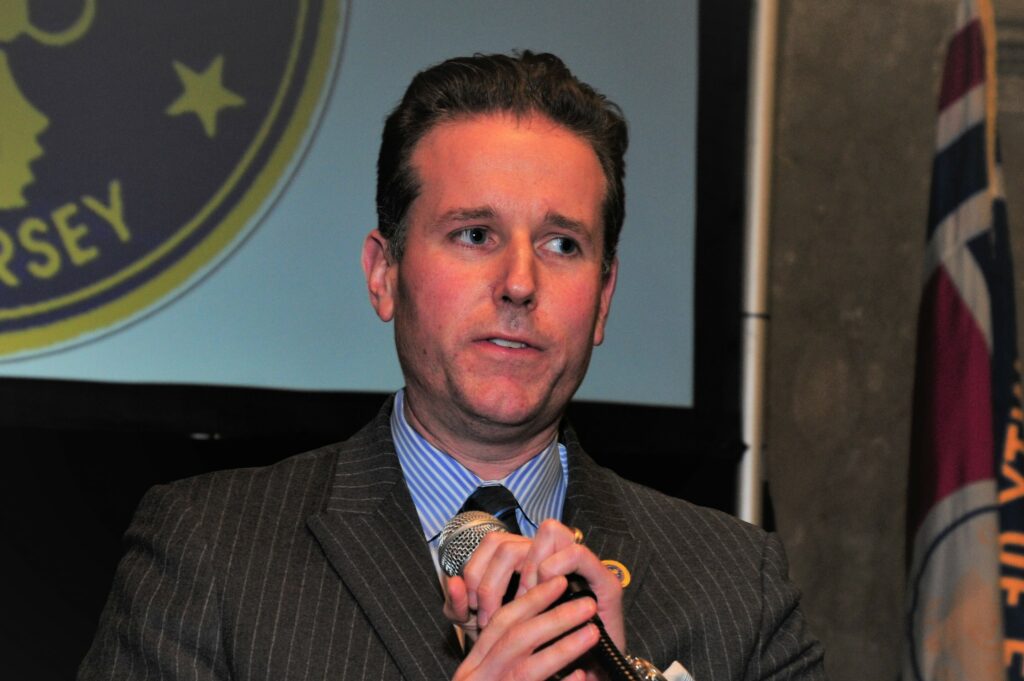One out of Three Ain't Gonna Cut it

In February of 2015, Supreme Court Justice Ruth Bader Ginsburg spoke to students at Georgetown University about what it was like to be one of the few women who have ever served on the US Supreme Court. Giving her opinion on when there would be enough women on the Supreme Court, she famously said “... my answer is when there are nine.”
There has been a lot of outrage over the past week regarding the candidate shuffle that has ensued from Senator Richard Codey’s retirement announcement. A tweet on August 17 asked, “Is there some kind of limit now for how many women can be on a legislative ticket at the same time? What am I missing?” And the critics have a point - regardless of the reasons, the optics of the back-room dealing are terrible for all involved. And after all, it is a fact that women, especially Latina and Asian women, are woefully under-represented in the State Legislature.
According to the Center for American Women and Politics, 43 women (35.8% of 120 seats) currently serve in the legislature, ranking New Jersey 21st among the 50 states in the proportion of women serving. If the goal is to keep the status quo at ⅓, then we are doing really well. A quick review shows that almost two thirds of legislative districts are currently represented by either no woman (10/40) or only one woman (19/40). Although both political parties play a role in this, it must be noted that eight out of ten districts that have only male representation are Republican and that the only two the districts that have all female representation (LD28 and LD29) are both Democratic.
If however, we want to make strides towards achieving gender parity, we must take opportunities like the one created in LD27, to increase representation by women, especially those of color. We need even more intentional action to increase the number of AAPI in the legislature. 13% of LD27 is Asian American, making them the largest non-white group in the legislative district; in fact in Livingston (where the third candidate was chosen from) a whopping 28% of the population identified as AAPI in the 2020 census. And yet there was zero conversation in news media or online around searching for an AAPI woman to fill the third seat.
Since the 2021 election, there were two vacancies created in LD28 when Senator Rice and Assemblyman Caputo chose to retire. The Essex County Democrats and Chairman Leroy Jones filled those vacancies with two Black women and the district will almost certainly continue to be represented by three Black women after the November election. This is a district that went from being represented by two men to all female in less than a year. It can be done - it just requires leaders and advocates who are truly committed to making it happen.
Anjali Mehrotra is a fierce advocate for representation and gender parity in all walks of life but especially at all levels of elected office. She herself has run for elected office twice; last for the New Jersey General Assembly in 2021. She is the elected Democratic Municipal Chair in Mountainside, Union County and serves on the cabinet of Emerge New Jersey, an organization that trains Democratic women to run for office.






Mehrotra is a radical Democrat. That's all we need to know. She cannot be trusted and needs to be marginalized.
I agree that proactive efforts should be made to diversify our representation. However, please note that it is the same Essex County Chairman Leroy Jones you praise at the end for LD28 and 29 who is primarily responsible for LD27 as well. Passaic County Chairman John Currie is the other involved, who helped elevate a long-serving team of a Latina Senator, Black Assemblywoman and Black Assemblyman in the 35th District, and supports an all woman ticket challenging in the 40th. You can't criticize and praise the same leaders and call it systemic, rather than situational. There isn't an easy solution, and based on other local leaders such as county committee, who have a legal right to the process based on state law as well as a justified right to their input as part of the party structure, it won't work out the same in every case. The legislature works in whole units of three members per district. When you throw out numbers like 13% AAPI, consider that anything under 34% might as well state, by that logic, that they don't deserve a seat. Hispanics make up 22% of the district, it is taking advantage of a census technicality that you don't consider them as non-white, but is misleading not to mention them in this context. The Black population is 12%, almost equal to Asian. What is the cutoff for deserving a seat? I believe women or men from any of these groups certainly could represent everyone regardless, but if you live by the %, you die by the %, and in this case you have to concede that the numbers fall short. Yes, we can and should do better in this area. No, it is not as easy as suggested here. Turnout numbers mean more to politicians than population numbers. Turn the numbers game in your favor.